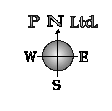INTRODUCTION
This unit is used to present ship’s heading from the gyro or magnetic compass. The display has the ability to be seen from very acute angles.
The screen presentation of a moving tape allows the instrument to be used for position keeping. Digital representation can be selected if preferred. Screen selection, illumination and control are by a tactile six-button keypad.
SPECIFICATION
INPUT 1: DC and rectified unsmoothed DC stepper, 4 to 90v. 360:1 synchro up to 115v/90v. 50/60 400/500 Hz.
90X 400 Hz contactless transmitter. Tracking rate = Frequency/3 deg/sec. (DC step 333 deg/sec)
Option: M-type resolved to 1/3 deg. OR NMEA 0183 input, so both input channels are NMEA.
Input 1 must be $HEHDT,x.x,T
INPUT 2: NMEA 0183, all heading sentences, with gyro priority.
OUTPUT 1: NMEA 0183 $HEHDT,x.x,T cr lf as default.
Rate 1 per second and whenever heading changes.
Others to order.
OUTPUT 2: 3 x 5v CMOS ports to sink or source 5 mA.
Alarm output as default.
Fit a 5 volt low power audible alarm or relay for high power alarm.
Options: Stepper 5v to drive a step amplifier or electronic interface.
Cetrek data, Furuno data, Yokogawa data.
DISPLAY: 166 x 41 mm viewing area. Variable brightness, keypad control.
SCREENS: Presentation screens, Tape; width +/- 15 degrees and +/- 12.5 degrees.
Tape traverse rate 20 deg/second independent of input tracking rate.
Large digital 41 mm high.
Digital with ROT bar graph +/- 30 deg/minute.
VERSIONS: OCA screen. Off Course Alarm. Uses only one heading input, and will give
alarm if you go off course more than the window set around desired course.
CCA screen. Compass Comparator Alarm. You must have two heading inputs as specified above. The 991 compares the two and gives an alarm if they diverge more than the window set. The window is variable up to 20 deg.
|


 Points North
Ltd,
Rosyth Europarc, Rosyth,
Fife,
Scotland, KY11 2YB
Tel +44(0)1383 417084
Fax +44(0)1383 414677
Mobile
07860 885154
Points North
Ltd,
Rosyth Europarc, Rosyth,
Fife,
Scotland, KY11 2YB
Tel +44(0)1383 417084
Fax +44(0)1383 414677
Mobile
07860 885154